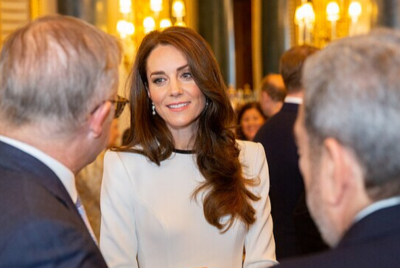Meghan Markle Wanted Out of 'Rural Obscurity' as Windsor Move Became 'Final Straw'
Quinn says Meghan viewed Kensington Palace living as 'a kind of prison'

A new royal biography claims that Meghan Markle viewed the couple's move to Windsor as the 'final straw' in a period marked by growing frustration with life inside the monarchy. The book alleges that both Kensington Palace and the secluded Frogmore Cottage failed to meet the Duchess of Sussex's expectations, shaping early tensions that would follow the couple throughout their time as working royals.
Biographer Outlines Early Discontent at Kensington Palace
According to royal author Tom Quinn, Meghan struggled to settle into Nottingham Cottage, the modest two-bedroom home on the Kensington Palace estate that she and Prince Harry moved into after their 2018 wedding.
As reported by RadarOnline, Quinn reports that the Duchess viewed the residence as significantly beneath what she had anticipated and was disappointed by the perceived limitations of daily life within the palace grounds.
Quinn writes that Meghan described her existence at Kensington Palace as 'a kind of prison'. Despite the property's reputation for privacy and its central London location, the biographer notes that the initial glamour soon faded as the realities of packed schedules and the demands of official travel became clear.
Nottingham Cottage and Concerns Over Status
Nottingham Cottage has long been associated with newly married or junior royal couples due to its smaller layout and comparatively humble status within the Kensington Palace complex. Quinn suggests that Meghan saw its size as a slight not only toward her but toward Prince Harry, interpreting the allocation as symbolic of how the couple was regarded within the royal hierarchy.
Royal commentator Ingrid Seward is quoted in the biography stating that Meghan was 'incredibly envious' of the much larger Apartment 1A occupied by the Prince and Princess of Wales.
Seward claims that Harry had jokingly referred to Nottingham Cottage as 'my hovel', a remark that is said to have sharpened Meghan's irritation with their living situation.
Move to Frogmore Cottage and Costly Renovations

Less than a year after their wedding, the couple relocated to Frogmore Cottage in Windsor, a property gifted to them by Queen Elizabeth II. The five-bedroom residence underwent extensive renovation, costing an estimated £2.4 million (around $3 million at the time) in public funds.
Upgrades included a high-end soundproofing system, underfloor heating and a copper bathtub. One builder involved in the refurbishment told Quinn that the aim was to create a contemporary space with a 'Californian condo' feel.
Despite the improvements, Quinn reports that Meghan remained uneasy about the location. The remodelled home, though larger and newly designed, did little to address her concerns about the isolation the area presented.
Meghan's Fear of Life in 'Rural Obscurity'
The biography states that Meghan complained, 'I do not want to retire to rural obscurity', while overseeing the renovation project. Insiders quoted in the book describe the Duchess as becoming unsettled by the property's seclusion, with one source suggesting the area felt 'like living in the Russian steppe'.
Quinn argues that the couple's expectations of finding a quieter and more secure retreat in Windsor did not materialise. Instead, their relocation highlighted the practical and emotional challenges of balancing privacy, royal duties and growing scrutiny.
How Palace Moves Shaped Rising Pressures
The biography links Meghan's concerns about housing and status to wider pressures the couple faced during their early years as working royals. With Meghan pregnant and significant public funds already committed to renovations, the couple remained in Windsor despite their misgivings.
Quinn suggests that these moments contributed to a mounting sense of unease that would later influence their approach to royal life.
© Copyright IBTimes 2025. All rights reserved.

















